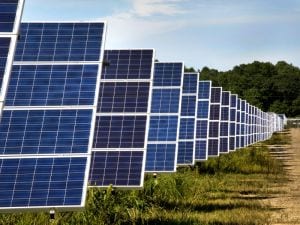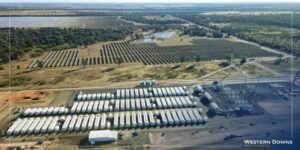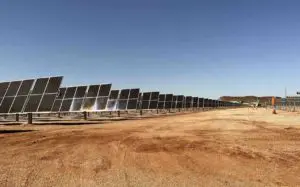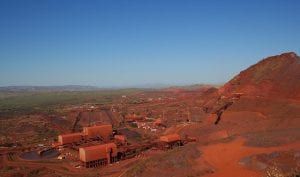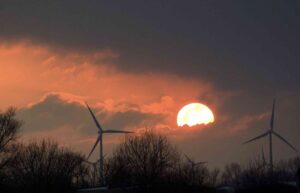Victoria’s large-scale solar drought appears to have well and truly broken, with the news this week that work is set to begin on 320MW of large-scale solar farms near Mildura in the state’s west.
The three roughly 100MW grid-connected solar farms are to be built by Australian company Overland Sun Farming in a joint venture with UK outfit Island Green Power, on separate sites in Yatpool, Iraak and Wemen.

Construction of the three projects – each of which stands to be the largest solar farm in the state – is slated to begin in April, which also puts them in the running to be the state’s first large-scale solar projects, if they are completed before the 60MW Gannawarra solar farm being built by Solar Choice and Edify Energy between Swan Hill and Kerang.
Unlike Ganawarra, which last week secured a power purchase agreement with EnergyAustralia, the fully funded $500 million Overland projects are going ahead without an offtake deal, but with grid-connection agreements already secured with Powercor subsidy Beon Energy Solutions.
Overland founder Brett Thomas – a former head of Spanish group Acciona’s operations in Australia – says the fact that his company is going ahead with the build without a PPA is a key indicator of the health of Australia’s big solar market.
It’s also not the only one taking advantage of high prices in wholesale markets and renewable energy certificates and going ahead with such arrangements, with Eco Energy World pursuing a 100MW plus project in north Queensland and Sun Brilliance doing the same in Western Australia.
“That’s the important message,” Thomas told RenewEconomy in a phone interview on Monday. “The market is strong enough to develop the projects without (an off-take) partner.
That said, the company says it is in talks with retailers on securing a PPA, the market for which appears to have picked up over the past few months.
As we reported here, the past two weeks alone, Snowy Hydro has contracted the 100MW Tailem Bend solar farm in South Australia, Ergon Energy has committed to the 100MW Lilyvale solar farm in Queensland, and Origin Energy signed a PPA with Reach Solar’s Bungala Solar Project, a potentially 200MW affair being developed 7km north-east of Port Augusta.
“There’s no doubt that the PPA market is hotting up,” Thomas added. “Particularly for projects like ours that are (fully funded and shovel ready).
“The grid is the real risk to many projects in the Australian market,” he said. “(as the) Australian network is becoming more and more constrained.”
Thomas’ pedigree in renewables is mainly in wind, through an extensive career at Acciona – although Acciona was one of the bidders in the Rudd government’s ill-fated Solar Flagships program.
But his interest now lies firmly in Big Solar, which he describes as “the new growth technology” in energy generation, both in Australia and internationally, as the delivered cost of PV generation continues to fall and general energy pricing heads in the other direction.
“I think solar has a big role to play,” Thomas told RE. And for Overland, Victoria’s Sunraysia region is a good place to start.

“We’ve been working there since we started in 2012,” he said, noting that the area’s abundance of “clear, flat land,” good connection capacity, and premium solar resource make it ideal for solar farms.
“We want to demonstrate that it can be done here,” he said. “It’s been talked about for awful long time.”
On policy, Thomas says renewables in Australia still need support for their “green component,” as has been delivered, thus far, through the RET.
“The value that energy brings to the market for its green credentials needs to be priced in,” he told RE. “But we’re now seeing solar being able to be delivered in Australia without any further government subsidies,” he added. An achievement he attributes largely to the efforts of ARENA.

